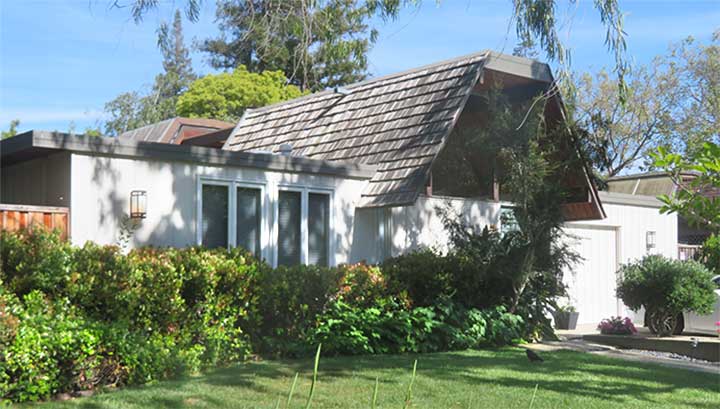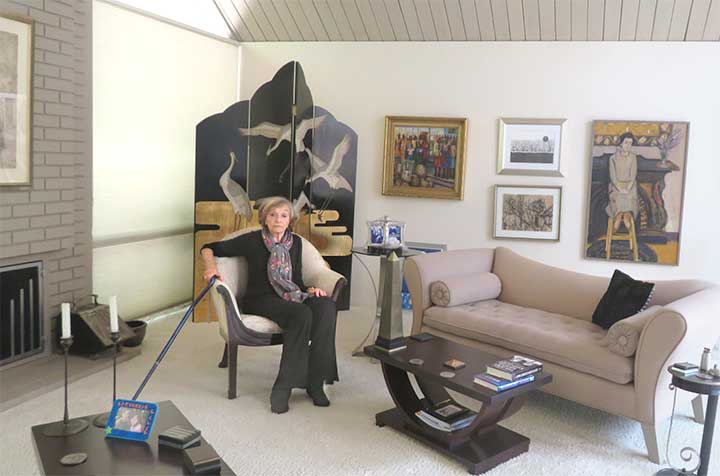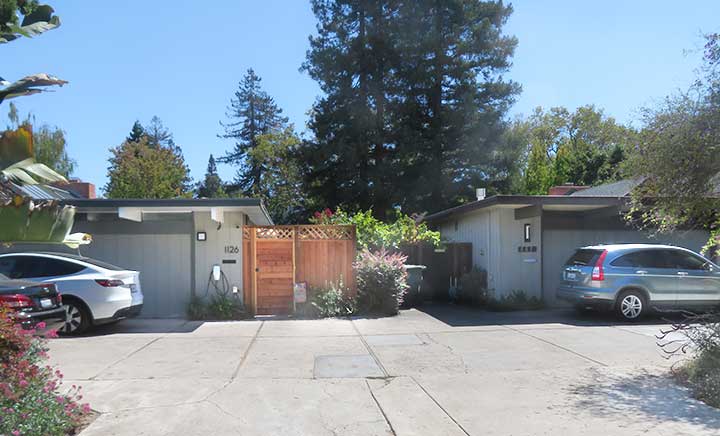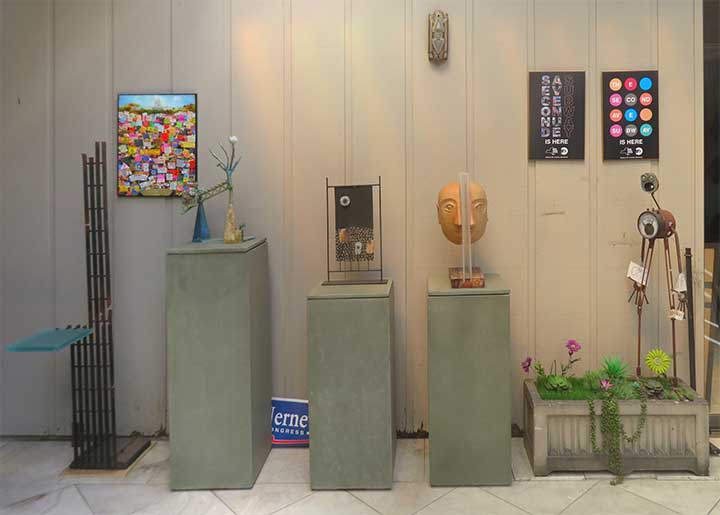
Eichler Homes Settle into Palo Alto’s Grid
 |
Visit the typical Eichler neighborhood, and it’s like wandering into a world apart, filled with mid-century modern homes – a bit mysterious, even strange, often beautiful, and all sharing a disnctive modern look.
But wander just a few blocks south of Professorville with its stately early 20th homes, on streets and avenues named Harker, Harriet, Melville, and others – are those Eichlers we see? Indeed they are, arrayed not in a tract with curving streets but as part of Palo Alto’s standard street grid. Some are set alongside or across from older homes, including bungalows going back to the 1910s.
The Community Center Eichlers represent one of Joe Eichler’s last neighborhoods, from 1973 and ‘74, and one of his most unique for the way it integrates with the city’s urban fabric, and in the way it clusters homes for efficient use of space.
 |
Many of the homes face the streets, but others are hidden away on flag lots, with long driveways leading to paired Eichlers.
Residents seem to appreciate what they have in this well-preserved neighborhood, which still has some original owners. The name 'Community Center' refers to several important community institutions nearby, a library, park, art center, theater, and more.
“I like the mixed neighborhood. I grew up in a place where every house was different.” says Margaret Parra, an original owner.
Interviews with Margaret and with her neighbor, Stephanie Grossman, also an original buyer, portray a neighborhood that Joe created shortly before he died.
 |
There were troubles building these homes (CA-Modern will delve into this is a post next week), but once fixes were made, the inhabitants of the just-over-two-dozen homes settled in to enjoy life. The location helped.
“The swimming pool was a few blocks away,” says Stephanie, who was a court reporter. With her husband Herb, a lawyer, she moved into their home in February 1974, after putting down a deposit a year or so earlier. They raised two children in the home.
“The library was a few blocks away. I mean, we considered it the perfect neighborhood. The Girl Scout house was there. The theater was there.”
About the neighborhood, Margaret says, “It was right in the middle of everything. I never had to drag my kids to any place. They went to the Junior Museum for classes. They could ride their bikes to their music lessons. And when they got older, they could ride their bikes downtown and to school.”
 |
The design of the mostly four-bedroom homes, with atriums and some galleries, also added to their owners’ pleasure. It helped that Joe, who was working from a Millbrae office, met with each buyer and would customize the homes a bit – something he rarely did during his earlier days of mass building.
Stephanie points out that the homes have retained their historic looks. The only one to have gotten a second-story addition is on a flag lot on Harker Avenue, she says. Most homes seem to have gotten movable roofs over the atrium, to control temperature.
Margaret, a teacher turned accountant who wound up overseeing Stanford’s spending on rebuilding the campus after the ‘89 quake, always loved the “Japanese aspect” to her home, which retains its warm interior redwood paneling.
“And I really loved the light,” she says. “We were lucky enough to get this lot that is situated so that when you look out the back, you only see trees. You hardly see the houses in the back. So it looks like you’re in a wood.”
Margaret, who raised three daughters here with her husband, a communications satellite engineer and project manager, also appreciated that it was a neighborhood of many mature trees. “The house on the corner had the oldest oak tree closest to the bay,” she says.
 |
But over the years, Margaret and Stephanie say, it’s been their neighbors that really made the tract a neighborhood. “It was like living in a small town.” Margaret says, running down her accomplished, stimulating neighbors from years back. “They had a lot of irons in the fire,” she says. She adds, “We would have get-togethers, like potlucks in people’s houses.”
It was an artistic neighborhood too. Margaret, who has a background in art, says some neighbors were artists. Stephanie, whose first career was fashion illustration, has emerged as an art collector.
Political activism was also big. Stephanie’s home has hosted “just about every famous California local politician. I had Eric Swalwell here and 161 people in this house for a fundraiser, the back yard, the atrium.”
For her part, Margaret worked with United Farm Workers back when Cesar Chavez was leading it. “We used to go out to the [worker] camps and help people get their driver’s licenses and do language classes,” she says.
She and her daughter would picket in front of grocery stores to protest the sale of non-union grapes. Margaret says, “That was sort of the political color of this neighborhood.”
- ‹ previous
- 177 of 677
- next ›



